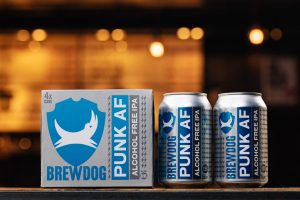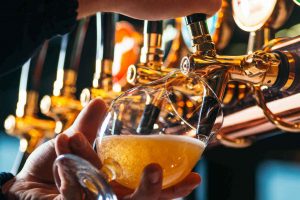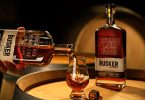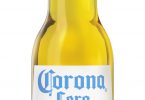Big Craft

More people around the world are drinking craft beer, with the under-30s leading the field. Some analysts estimate that craft beer will witness an annual growth rate of 11% across Europe alone over the next few years thus ensuring that the growing tendency towards the Premium, Super Premium and Craft categories continues to be clearly evident.
As established multinational brewers continue to invest in craft breweries and regional brands, DSM, a global health, nutrition and materials company in the UK, commissioned a Global Insights Report uncovering craft drinkers’ attitudes to the product.
It found that they put quality – and specifically taste – above everything else (including price) and are increasingly adventurous and open-minded, with only 50% expressing a specific brand loyalty.
Craft beer drinkers place more emphasis on provenance and sustainability, according to The Craft Revolution in Brewing, part of DSM’s Global Insight series, which covered several thousand adult craft drinkers of all ages in seven geographic markets (the UK, the US, Belgium, Spain, France, Italy and the Netherlands).
Increasingly adventurous and open-minded, some 80% of craft drinkers continue to try new brands – only 4% said they wouldn’t – so it looks as if the craft beer revolution is indeed here to stay.
In fact only one in five customers surveyed believes that the popularity of craft beer won’t last.
“As smaller brewers enjoy significant growth and established multinational brewers continue to invest in craft breweries and regional brands, we appear to be witnessing the birth of a new phenomenon: Big Craft,” states the report which adds that some 87% of those surveyed said that for them, craft was defined primarily as a beer made in small batches and sold through a microbrewery.
Beer consumers are ready and willing to pay for a high-end product
The report found that, “In the past two years, just under 50% of the craft drinkers we surveyed say they now drink more craft beer. Just 6% of this group are drinking less craft beer. The greatest increase took place in those aged 18-30. Crucially, this increase is eating into regular beer consumption with 56% of respondents saying they drink less regular beer now”.
It also found that 45% of respondents drink craft beer out of home at least once a week and that 66% drink craft beer for the taste. Some 75% cited taste above all else when choosing a beer, including price.
64% of craft beer drinkers under 30 say that they drink more craft beer than they did two years ago and a majority of the craft drinkers surveyed expressed an interest in trying local beers from around the world, with one-third expressing a strong interest in trying new foreign craft beers.
For the smaller craft brewer the growing consumer appetite for new craft experiences represents a huge opportunity to grow the brand, expand into new markets and ultimately grab a larger share of this lucrative premium segment, states the report which found that two-thirds of consumers were attracted to craft beer because they see it as a premium, high-quality product.
But what happens when demand requires that it be produced in larger quantities, that it travel greater distances and sit on shelves for longer?
For the larger brewers DSM had this advice: “In 10 years’ time craft drinkers may be studying a label not only to learn the ingredients, but to see how the beer was actually made. What a competitive advantage this could be for big brewers who can make it happen and demonstrate the provenance (and credibility) of their craft beer”.
This could prove problematical for smaller craft brewers as another study found 83% of German beer consumers stating that their purchasing decision would remain unaltered should a craft beer brand be owned by a large company.
But GlobalData sounds a note of warning across the bows of the whole craft beer sales cruiser. In a report entitled Snapshot of Beer and Cider Innovation Trends the research company states that overloading the consumer with choice has devalued the ‘craft’ concept.
But what’s abundantly clear today is that the public consider themselves up to trying more alternative beer styles than they would have done a decade ago.
Irish craft beer market
Here in Ireland production output from microbreweries continues to grow according to the recently-published Irish Beer Market Report from the Irish Brewers Association. In 2017, the latest year for which figures are available, it totalled 157,000 Hectolitres, representing a 1.9% share of total beer production (up from 2016’s 1.84% figure). 2017’s microbrewery production output figure represents growth of 10.6% on 2016’s 142,00 Hl figure and is 83% up on the 2014 production figure of 86,00 Hectolitres.
At the other end of the line sales of craft beer have grown 6.7% from 119,000 Hectolitres in 2016 to 127,000 Hectolitres in 2017. This marks an increase of 135% from the 2014 sales figure of 54,000 Hectolitres and represents a steady 2.6% share of total beer consumption.
BrewDog’s Punk AF

BrewDog has just released a new alcohol-free beer, Punk AF. The Scottish brewer is on a mission to prove that ‘Alcohol-free’ does not equate to ‘taste-free’.
And now it brings a new alternative to the mainstream – a beer for those seeking a Point Of Difference at 0.5% ABV that brings all the attitude of the flagship, all of the flavour – but none of the alcohol.
Punk IPA was the beer that kick-started the craft beer revolution and Punk AF is the next step in BrewDog’s desire to brew beer for every taste, for every occasion.
Brewed with eight different hops from North America, New Zealand and Europe, Punk AF lives up to its billing in every respect. Juicy tropical fruit mixes it up with grassy notes and a hit of resinous pine, all sitting on a solid foundation of four different malts. The bitter finish belies its ABV, rolling in at 35 International Bitterness Units to provide the perfect retort to those who push alcohol-free beer devoid of character.
Alcohol-free beer just got Punked up. This is Punk AF, the new saviour of alcohol-free.
Distributed by Barry & Fitzwilliam.

Here in Ireland production output from microbreweries continues to grow according to the recently-published Irish Beer Market Report from the Irish Brewers Association.








